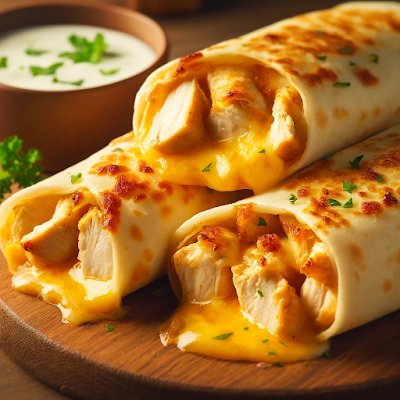Essential Kitchen Tools Every Home Chef Needs
Whether you're just starting out in the kitchen or you're a seasoned home chef, having the right tools can make all the difference. With the right kitchen gadgets, cooking becomes not only easier but also more enjoyable. In this article, we’ll explore the essential kitchen tools that every home chef should have to create delicious meals with efficiency and precision.
1. Chef’s Knife
A high-quality chef’s knife is arguably the most important tool in any kitchen. It’s versatile and can be used for slicing, dicing, chopping, and mincing a variety of ingredients. Invest in a well-balanced, sharp knife, as it will make food prep faster and safer.
Pro Tip: Keep your knife sharp with regular honing and occasional professional sharpening to maintain its edge and longevity.
2. Cutting Board
A sturdy cutting board is essential for food preparation. Choose a wooden or bamboo board for durability and knife protection, or a plastic one for easy sanitizing. Having both types can be handy for handling raw meats and vegetables separately.
Pro Tip: Opt for a cutting board with grooves around the edges to catch any liquids and prevent spills on your counter.
3. Measuring Cups and Spoons
Accuracy is key when it comes to cooking, especially in baking. A set of measuring cups and spoons ensures that you get the right amount of ingredients every time, whether you're following a recipe or experimenting with your own creations.
Pro Tip: Use dry measuring cups for ingredients like flour and sugar, and liquid measuring cups for oils, water, and milk to get the best results.
4. Mixing Bowls
Mixing bowls are an essential tool for combining ingredients, marinating meats, or tossing salads. Stainless steel or glass bowls are durable and versatile, while plastic bowls are lightweight and easier to handle.
Pro Tip: Look for nesting sets of bowls that save space and offer various sizes for different kitchen tasks.
5. Cast Iron Skillet
A cast iron skillet is a must-have for any home chef. It’s incredibly versatile and can be used for frying, baking, sautéing, and even grilling. It retains heat exceptionally well, giving you the perfect sear on meats and vegetables.
Pro Tip: Season your cast iron skillet regularly to keep it non-stick and rust-free, and avoid using soap when cleaning to maintain its seasoning.
6. Non-Stick Frying Pan
While a cast iron skillet is great for many tasks, a non-stick frying pan is ideal for cooking delicate foods like eggs, fish, and pancakes. It requires less oil and makes for easy flipping and cleanup.
Pro Tip: Use silicone or wooden utensils with non-stick pans to prevent scratching the surface.
7. Tongs
Tongs are essential for flipping, turning, and grabbing food without piercing it. They’re great for grilling, frying, and tossing salads. A good pair of tongs gives you more control than a spatula or fork.
Pro Tip: Look for tongs with silicone tips to prevent scratching your cookware and for heat resistance when handling hot foods.
8. Immersion Blender
An immersion blender is a handy tool for pureeing soups, sauces, and smoothies right in the pot or bowl. It eliminates the need to transfer hot liquids to a blender, saving you time and reducing mess.
Pro Tip: Choose an immersion blender with multiple speed settings to handle a variety of textures and consistencies.
9. Microplane Zester
This small, but mighty tool is perfect for grating citrus zest, cheese, garlic, and even spices like nutmeg. A microplane adds a burst of flavor to your dishes with minimal effort.
Pro Tip: Use it to grate fresh ginger or garlic into sauces for an instant flavor boost.
10. Digital Meat Thermometer
A meat thermometer is essential for ensuring your proteins are cooked to perfection. Whether you're roasting a chicken, grilling steaks, or baking fish, a thermometer takes the guesswork out of cooking meats to a safe and delicious temperature.
Pro Tip: Look for a digital thermometer with a quick-read function to get accurate readings in seconds.
Conclusion
Having the right tools in your kitchen can make a world of difference in how you cook. From a chef’s knife and cutting board to a cast iron skillet and immersion blender, these essential kitchen tools will not only improve your efficiency but also elevate your culinary skills. Whether you're preparing simple weeknight dinners or tackling more complex recipes, these tools are must-haves for every home chef.
FAQs
- Q: How often should I sharpen my chef’s knife?
A: It’s recommended to hone your knife after every few uses and get it professionally sharpened every 6-12 months depending on how often you cook.
- Q: Can I use a non-stick frying pan on high heat?
A: It’s best to avoid high heat with non-stick pans, as it can damage the coating. Stick to medium or low heat for best results.
- Q: What’s the difference between a cast iron skillet and a non-stick pan?
A: A cast iron skillet is better for high-heat cooking and searing, while a non-stick pan is ideal for delicate foods like eggs and pancakes.
- Q: How do I clean and maintain a cast iron skillet?
A: Clean your cast iron skillet with hot water and a scrub brush, then dry it immediately and rub it with a thin layer of oil to maintain the seasoning.
- Q: What size mixing bowls should I get?
A: A set with small, medium, and large mixing bowls covers most kitchen tasks, from whisking dressings to mixing large batches of dough.





